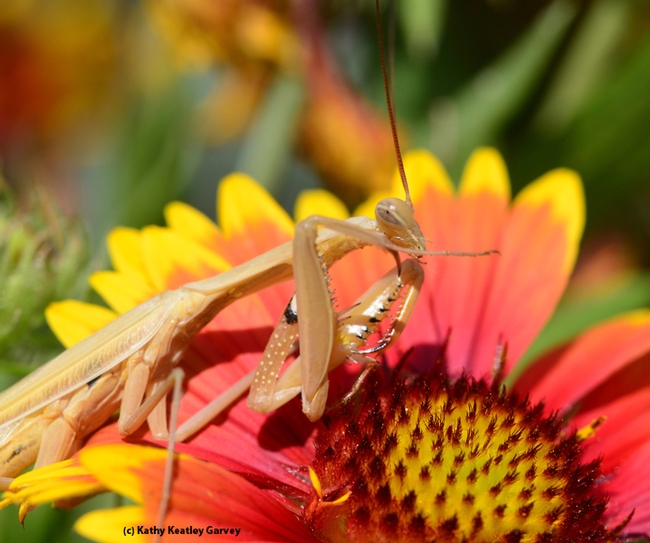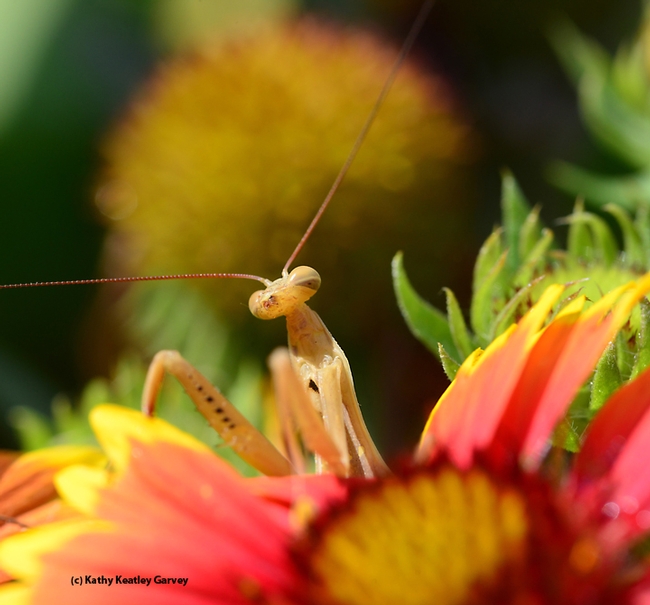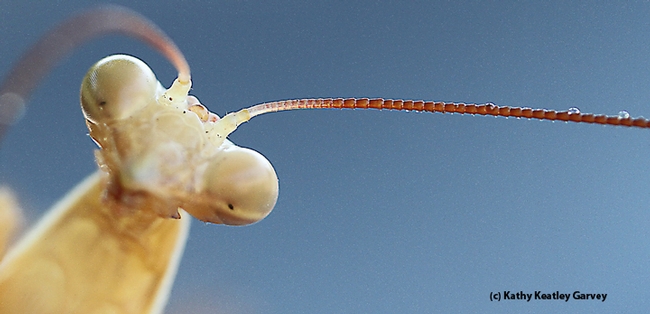Whenever folks post photos of praying mantids, their readers expect to see prey.
You know, the hapless bee or butterfly that made the fatal mistake of getting too close to those spiked forelegs.
This praying mantis (below) appeared to have been a hapless victim of another predator. It, still however, kept that praying mantis pose as it tried to find prey on a blanketflower (Gaillardia). And it still rotated its head 180 degrees.
Praying mantis belong to the order, Mantodea, which includes more than 2400 species and about 430 genera in 15 families, according to Wikipedia.
"They are distributed worldwide in temperate and tropical habitats. Most of the species are in the family Mantidae," Wikipedia tells us. "Females sometimes practice sexual cannibalism, eating their mate after, or occasionally decapitating the male just before mating."
Did you know that the closest relatives of mantids are termites and cockroaches (Blattodea)? And that they are sometimes "confused with stick insects (Phasmatodea) and other elongated insects such as grasshoppers (Orthoptera), or other insects with raptorial forelegs such as mantisflies (Mantispidae)?" Check out Wikipedia's entry for praying mantids.
Praying mantids live about a year. This one lived about five hours before it expired.
But not before it gave a honey bee the fright of her life.
Attached Images:



